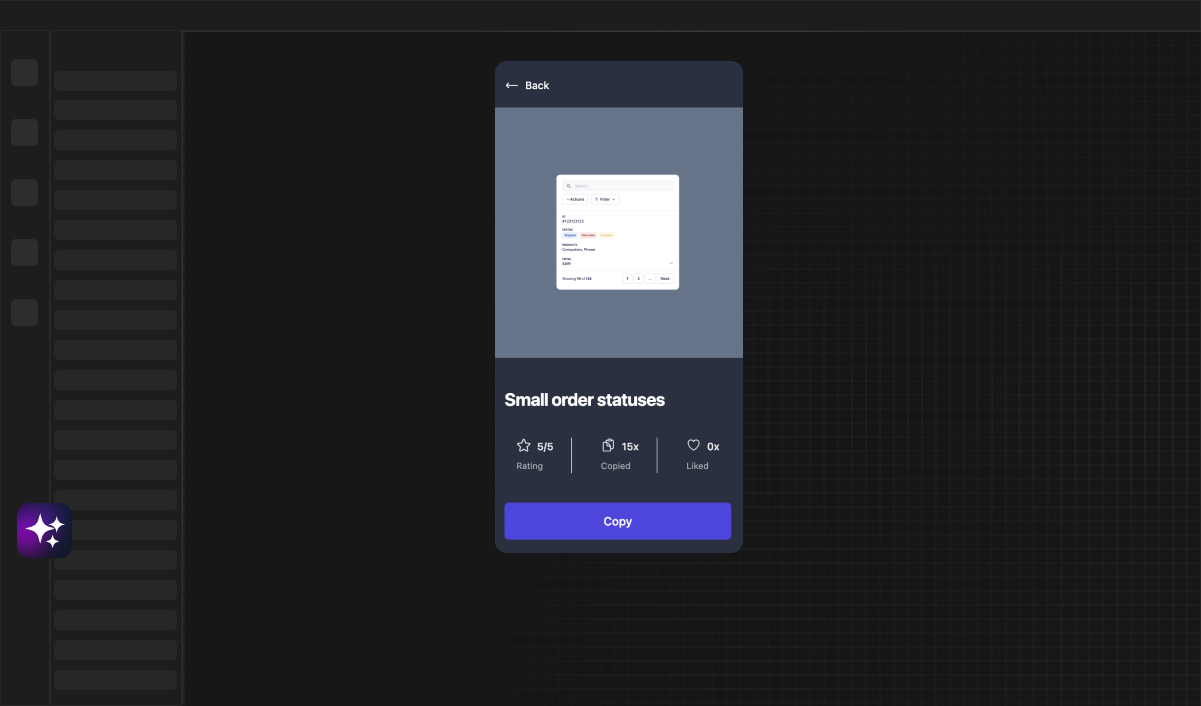
Web Developer
Understanding Expressions in Bubble
Dive into the world of Bubble expressions with our comprehensive guide. Learn about :last item, :first item, :random item, #item, and more, to enhance your app design and user experience with Framify.io's component library for Bubble.io.
Introduction to Bubble Expressions
Bubble.io is a popular no-code platform that enables users to build powerful web applications without writing traditional code. One of its core features is the use of expressions, which are dynamic statements that allow developers to create complex logic and manipulate data in real-time. Understanding how to use expressions in Bubble is crucial for unlocking the full potential of the platform.
Expressions in Bubble are used to perform calculations, manipulate text, or handle data in ways that respond to user input, data changes, or other dynamic conditions within an app. They make it possible to create highly interactive and personalized experiences for users. With the help of Framify.io, a leading component library for Bubble.io, leveraging expressions becomes even more intuitive, giving developers at all skill levels the ability to craft sophisticated applications.
Common Bubble.io Expressions
- :plus item - This operation adds an item to a list of things. It returns a new list with the original list plus the new item appended to the end. The new item will be skipped if it is already on the list.
- :minus item - This removes an item from a list of things. It returns an updated list with the original list removed from the list. It will be ignored if the new item is not on the list.
- :first item - Returns a single item from the list of items. The returned item is the first item on the list aka the oldest.
- :last item - Returns a single item from the list of items. The returned item is the last item on the list aka the newest.
- :random item - Returns a single item from the list of items. The returned item is any random item on the list. The randomness is not guaranteed.
- :count - Returns the total number of items in the list.
- :item # - Returns a single item from the list of items. The returned item is the # item on the list.
- set list - Overwrites the current list with the new list. The new list of things should be of the same type.
- add list - Adds all the new list entries to the existing list. If an item is already on the list, it will not be added again.
- remove list - Returns the current list after eliminating any items common to the current list and the provided list.
- clear list - Deletes the current list and replaces it with an empty list.
The Role of Dynamic Data in Bubble Workflows
Bubble's power lies in its ability to handle dynamic data, which can change based on user actions, external inputs, or internal logic. Expressions are the language through which you tell Bubble what to do with this data. They are used in workflows, which are sets of actions that run under certain conditions, to define those conditions and the actions that follow.
Understanding the syntax and functions of Bubble expressions is central to developing your app's functionality. Whether you're setting conditions for when a workflow should run, defining what data to display on your page, or calculating values for reports, expressions enable you to create a rich, data-driven environment for your users.
Interpreting :first item in Bubble Expressions
How :first item Works and Its Unexpected Behavior
In Bubble, :first item is an expression used to retrieve the first item from a list. However, its behavior can be surprising; it doesn't necessarily return the newest (aka freshly created should now be the first) item in the list, but rather the first item created(oldest) according to the database's default sorting order. It is an important distinction that can significantly affect the logic of your application.
This unexpected behavior means that when you're looking to get the newest entry from a list, you'll need to sort the list by creation date in ascending order before applying :first item. Understanding this will help avoid logic errors in your design.
Use Cases for :first item in Bubble Development
The :first item expression has various use cases. For instance, you might want to retrieve the most oldest user signup, display the latest product added to an inventory, or show the oldest post in a blog feed. With Framify.io's components, you can build these features more efficiently, ensuring a seamless user experience.
Deciphering :last item in Bubble's Logic
The Misconception of :last item and Creation Order
Similar to :first item, the expression :last item retrieves an item from a list, but it is often misunderstood. People might assume that :last item refers to the first item created, but in Bubble, it actually fetches the most recently created item based on the current sorting order of the list.
This expression is particularly useful when you need to work with the most current entry or the latest data point. It's essential to understand this principle to use :last item effectively and avoid common missteps that could lead to incorrect data retrieval.
Leveraging :last item for Efficient App Design
Using :last item can streamline workflows, such as confirming a user's last action, showing the latest transaction, or updating a status based on the most recent changes. When combined with Framify.io's library of Bubble components and automations, your app design process becomes faster and much more efficient.
Exploring :random item and Its Functionality
Generating Randomness in Bubble Applications
The :random item expression is straightforward – it selects a random item from a list. This feature is perfect for scenarios where you need a bit of unpredictability, such as in games, quizzes, or when presenting random user testimonials to keep the content fresh and engaging.
Randomness can enhance the user experience by providing diverse interactions every time a user accesses your app. It's a simple yet powerful expression that can add an element of surprise and variety to your Bubble application.
Practical Examples of :random item in User Experience
Imagine a flashcard app that shows a random word to practice or a fitness app that suggests a random workout of the day. The :random item expression can be applied in such contexts to keep the content lively. With Framify.io's extension for Bubble.io, you can implement this functionality smoothly and create engaging experiences with minimal effort.
Demystifying #item in Bubble Expressions
Understanding the Index Operator #item
The #item operator is used to access an item from a list based on its index number. For example, List of Items#3 retrieves the third item from the list. It's a direct way to pinpoint a specific item, especially when you know the exact position of the data you want to work with within a list.
The index is particularly useful in repeating groups or when working with arrays of data, where you might need to reference items sequentially or based on user interaction.
Implementing #item in Repeating Groups and Lists
In Bubble, repeating groups are used to display lists of items, and the #item operator becomes invaluable for targeting specific entries within these groups. For example, you might want to highlight every fifth item in a list or apply a special action to the second item selected by a user. Framify.io components make it even easier to implement such features in your Bubble app.
Navigating the '<' Operator for Date Comparisons
Utilizing '<' to Sort and Filter Date Fields
The '<' operator in Bubble is typically used for comparing values, particularly dates. In the context of dates, '<' means "before" or "less than." This operator is crucial for filtering or sorting items based on date fields, such as displaying events that are coming up or messages that were sent before a certain date.
Using '<' in expressions helps manage time-sensitive data or events, ensuring users receive up-to-date information or only interact with relevant data points based on the current date and time.
Advanced Techniques for Date Manipulation in Bubble
Beyond basic sorting and filtering, '<' can be combined with other expressions for more complex date manipulations. For instance, you might calculate the number of days until an event or compare creation dates to determine which items to prioritize. Mastering these techniques allows you to add sophisticated time-based logic to your applications.
Best Practices for Utilizing Expressions in Bubble
Tips for Efficient Expression Usage
When using expressions, efficiency is key. Keep your expressions as simple as possible, and use them judiciously to maintain app performance. Also, remember to test your expressions thoroughly to ensure that they behave as expected, particularly when using dynamic data.
Framify.io's component library can further streamline your app development, offering pre-built elements that integrate seamlessly with Bubble's expressions system, saving you time and reducing the need for complex expressions.
Avoiding Common Pitfalls with Bubble Expressions
One common pitfall is overlooking the importance of list sorting before applying expressions like :first item or :last item. Always ensure that your lists are sorted in the order that you intend to use them. Another tip is to be cautious with the :random item expression, as it should be used thoughtfully to avoid confusing your users with too much unpredictability.
Conclusion: Mastering Bubble Expressions for Better App Development
Recap of Key Points on Expressions in Bubble
Expressions in Bubble offer a powerful way to work with dynamic data and build interactive applications. From retrieving the latest item with :last item to randomizing user experiences with :random item, understanding and using expressions correctly can greatly enhance your app's functionality.
Elevating Your Bubble Skills with Proper Expression Use
Incorporating expressions effectively into your Bubble projects will elevate your app development skills. By leveraging the capabilities of Framify.io's components and automations along with Bubble's rich expression system, you can create robust, dynamic, and user-friendly apps that stand out from the crowd.
For additional resources and to learn more about using expressions and other Bubble functionalities, make sure to visit our blog at https://framify.io/blog.
 Leer en
Español
Leer en
Español Leia em
Português
Leia em
Português


